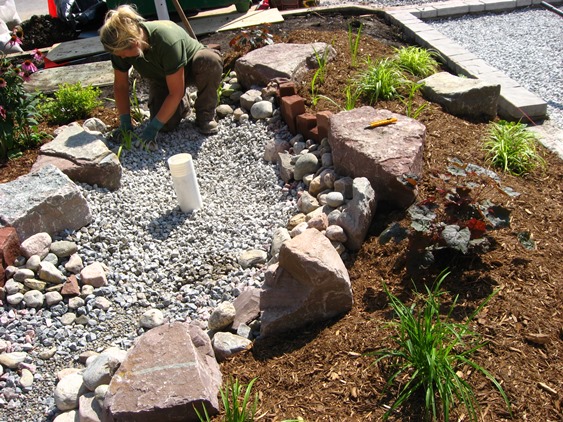Low Impact Development Stormwater Inspection and Maintenance Guide
 Integration of Low Impact Development (LID) best management practices (BMPs) into stormwater management systems is widely advocated to better address all potential impacts of urbanization on the health of receiving waters. A substantial amount of guidance is available on the planning and design of LID BMPs and their construction. However, even with sound design and construction, the function and treatment performance of LID BMPs will only be sustained over the long term if they are adequately inspected and maintained.
Integration of Low Impact Development (LID) best management practices (BMPs) into stormwater management systems is widely advocated to better address all potential impacts of urbanization on the health of receiving waters. A substantial amount of guidance is available on the planning and design of LID BMPs and their construction. However, even with sound design and construction, the function and treatment performance of LID BMPs will only be sustained over the long term if they are adequately inspected and maintained.
Municipalities already face significant challenges in tracking, inspecting and maintaining their own conventional stormwater infrastructure and ensuring practices on private property are adequately maintained. Integrating LID BMPs into stormwater infrastructure programs presents several additional problems, including:
- Lack of experience with inspection and maintenance of LID BMPs;
- Legal arrangements necessary to ensure inspection and maintenance on private property;
- Distributed, decentralized, small-scale practices require more effort to manage them;
- Lack of detailed guidance and templates for program design and implementation.
This guidance document is intended to assist municipalities and industrial/commercial/institutional (ICI) property managers with developing their capacity to integrate LID BMPs into their stormwater infrastructure programs. Part 1 of the document provides guidance on designing an effective LID BMP inspection and maintenance program, based on experiences and advice from leading jurisdictions in the United States, adapted to an Ontario context. Part 2 of the document establishes standard cold climate protocols for inspection, testing and maintenance of seven types of structural LID BMPs.



